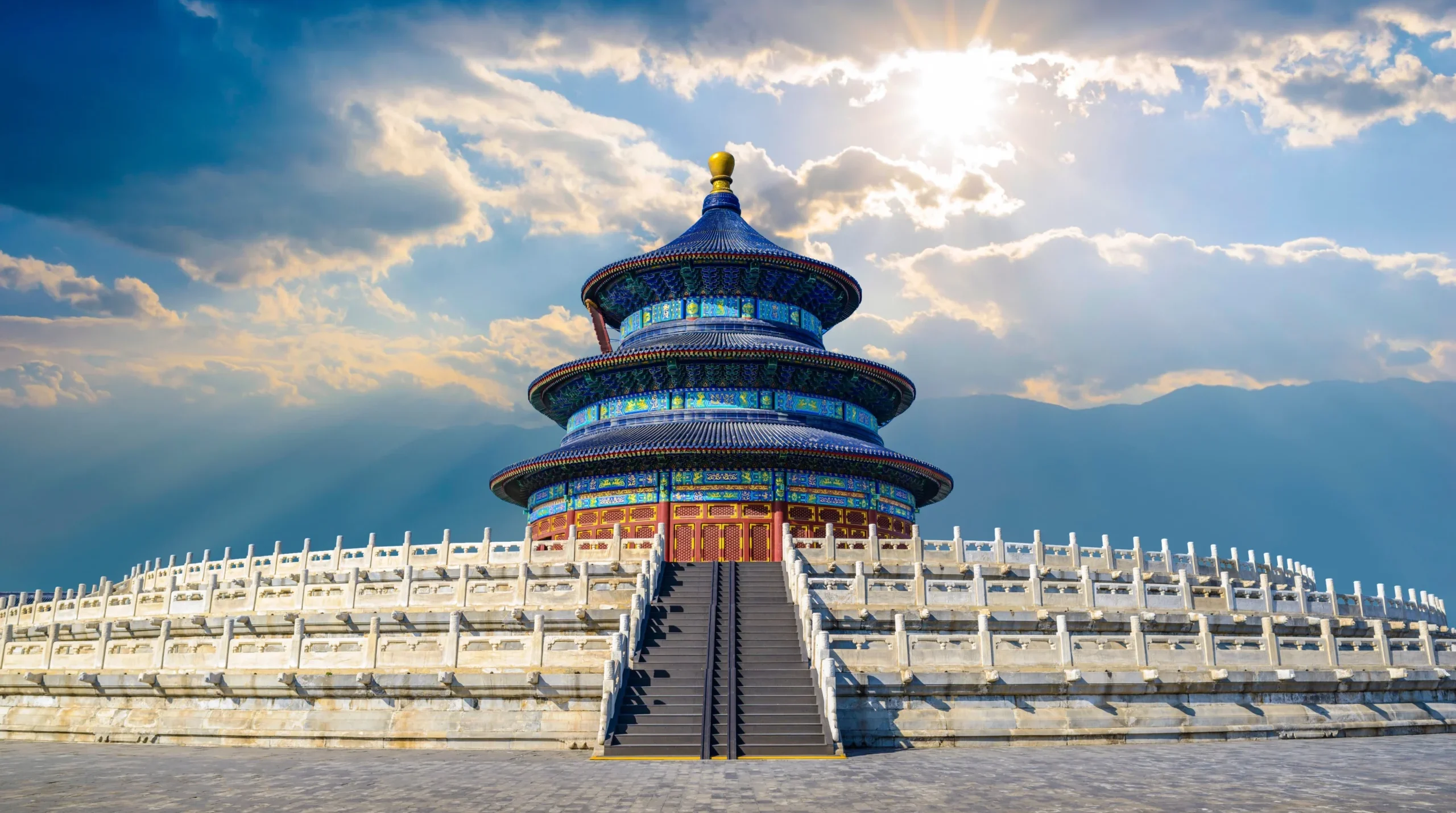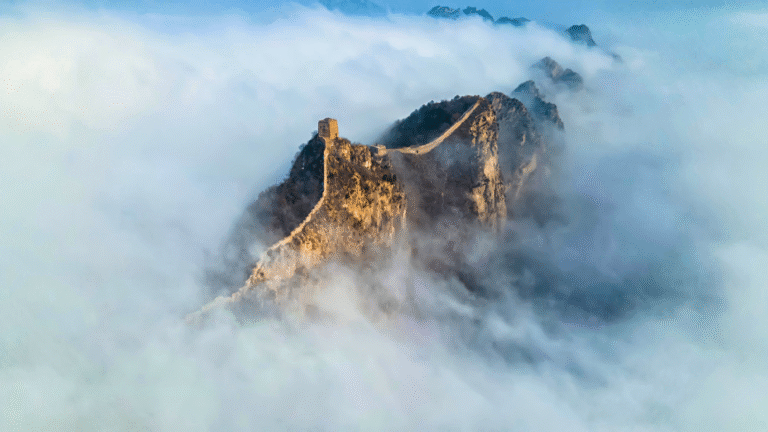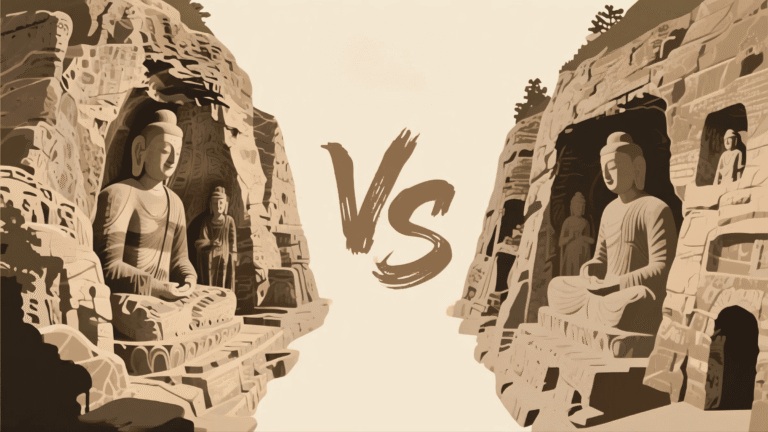Temple of Heaven: China’s Most Sacred Imperial Complex
The Temple of Heaven stands as the supreme achievement of traditional Chinese architecture in Beijing‘s Tiantan Park. This UNESCO World Heritage site covers 273 hectares and served as the spiritual heart of the Chinese empire for over 500 years, where emperors of the Ming and Qing dynasties performed annual ceremonies of prayer to Heaven for a good harvest.
At Travel China With Me, we’ve guided countless of travelers through this architectural masterpiece. The Temple of Heaven offers an unparalleled window into China’s imperial past, combining stunning architecture with profound cultural significance that continues to influence Chinese society today.
Quick Facts
Size: 273 hectares (four times larger than the Forbidden City)
Built: 1420 during Ming Dynasty Emperor Yongle’s reign
UNESCO Status: World Heritage site since 1998
Location: Dongcheng District, Beijing
Original Name: Altar of Heaven and Earth until 1534 when renamed Temple of Heaven
Historical Use: Annual ceremonies by Ming and Qing emperors
Main Structures: Hall of Prayer for Good Harvests, Imperial Vault of Heaven, Circular Mound Altar
Design Philosophy: Round structures represent heaven, square foundations symbolize earth
Key Feature: Layout symbolizes the belief that heaven is round and earth square
Architecture: Largest and best-preserved altar complex in China
Table of Contents
History and Cultural Significance
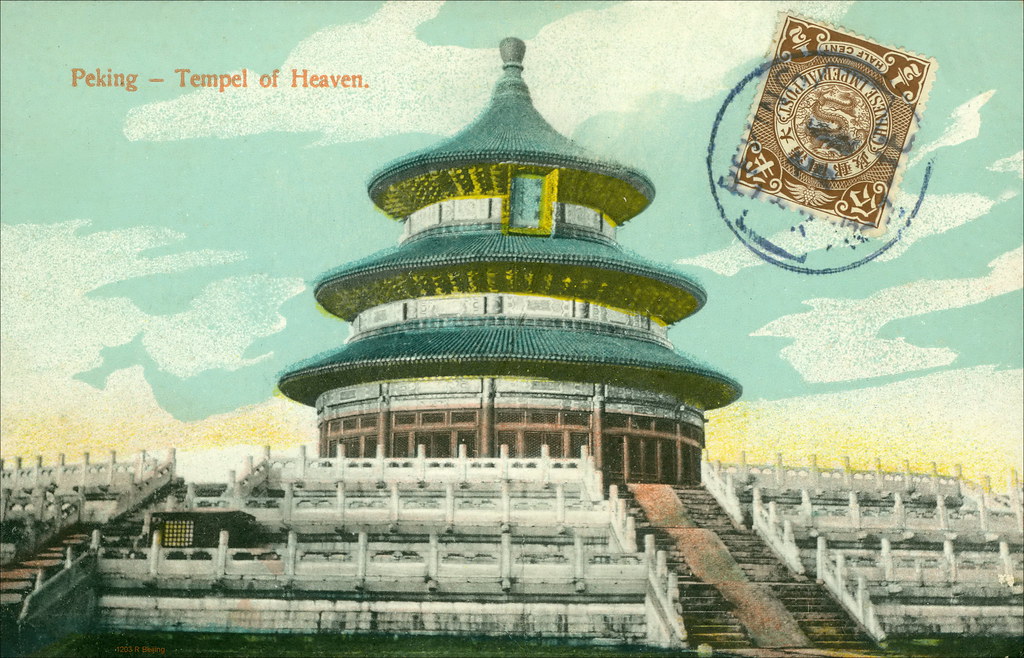
The Temple of Heaven’s history spans over six centuries, deeply intertwined with China’s imperial legacy. Originally built by Ming Dynasty Emperor Yongle in the 15th century as a place of worship for Chinese emperors, this sacred site witnessed the rise and fall of two major dynasties and served as the spiritual anchor of Chinese imperial power.
The Emperor came every winter solstice to worship heaven and to solemnly pray for a good harvest. Since his rule was legitimised by a mandate from heaven, a bad harvest could be interpreted as his fall from heaven’s favour and threaten the stability of his reign. This makes the Temple of Heaven not just a religious site, but a crucial political institution that could determine the fate of entire dynasties.
The architectural philosophy behind the complex reflects profound Chinese cosmological beliefs. In its overall layout and that of its individual buildings, it symbolizes the relationship between earth and heaven – the human world and God’s world – which stands at the heart of Chinese cosmogony, and also the special role played by the emperors within that relationship. This sacred geometry isn’t merely decorative – it represents a sophisticated understanding of humanity’s place in the cosmic order.
The ceremonial protocols were incredibly elaborate and strictly regulated. Emperors would fast for three days before the winter solstice ceremony, wearing specific ritual garments and following precise movements dictated by ancient traditions. These ceremonies weren’t just religious observances – they were public demonstrations of imperial legitimacy and cosmic harmony that reinforced the emperor’s divine mandate to rule.
What strikes us most about the Temple of Heaven’s history is its continuity. A few years after the fall of the Qing dynasty when China was officially a republic, sacrifices to heaven were performed, demonstrating the enduring power of these ancient traditions even as political systems transformed around them.
Why the Temple of Heaven is Worth Your Visit
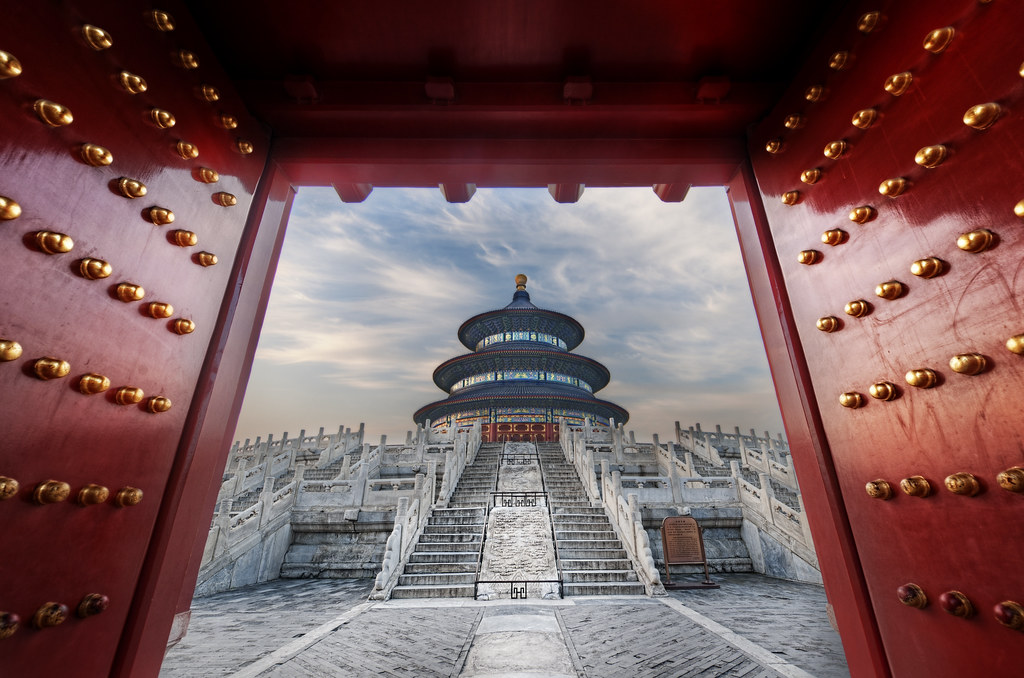
The Temple of Heaven offers visitors a unique opportunity to experience Chinese culture on multiple levels simultaneously. Unlike many tourist attractions that focus on a single aspect of history or architecture, this complex provides insights into philosophy, politics, religion, art, and science all within one magnificent setting.
The architectural achievement alone justifies a visit. Considered the supreme achievement of traditional Chinese architecture, its layout symbolizes the belief that heaven is round and earth square. The precision of the construction demonstrates ancient Chinese mastery of engineering principles that modern architects still study and admire today.
From a traveler’s perspective, the Temple of Heaven provides exceptional photographic opportunities throughout different seasons. The contrast between the brilliant blue-tiled roofs and white marble terraces creates striking visual compositions, especially during golden hour lighting. The surrounding park offers peaceful walking paths where you can observe local residents practicing tai chi, playing traditional instruments, and engaging in other cultural activities that bring the space to life.
The spiritual atmosphere remains palpable despite the crowds. Walking through the same spaces where emperors once communed with heaven creates a profound connection to Chinese history and philosophy. The acoustic properties of the buildings add another dimension to the experience – whispered conversations in the Imperial Vault of Heaven can be heard clearly across the circular chamber due to the precise engineering of the dome structure.
For photography enthusiasts, the Temple of Heaven provides endless compositional possibilities. The geometric patterns in the marble platforms, the intricate wooden brackets supporting the roofs, and the interplay of light and shadow throughout the day create compelling visual narratives that capture both architectural beauty and cultural depth.
Educational value ranks among the site’s greatest strengths. The Temple of Heaven offers insights into Chinese imperial history, traditional architecture, religious practices, and philosophical concepts that shaped East Asian civilization. These lessons extend far beyond academic knowledge, providing practical understanding of contemporary Chinese culture and values.
Architectural Highlights and What to See
Hall of Prayer for Good Harvests (Qiniandian)
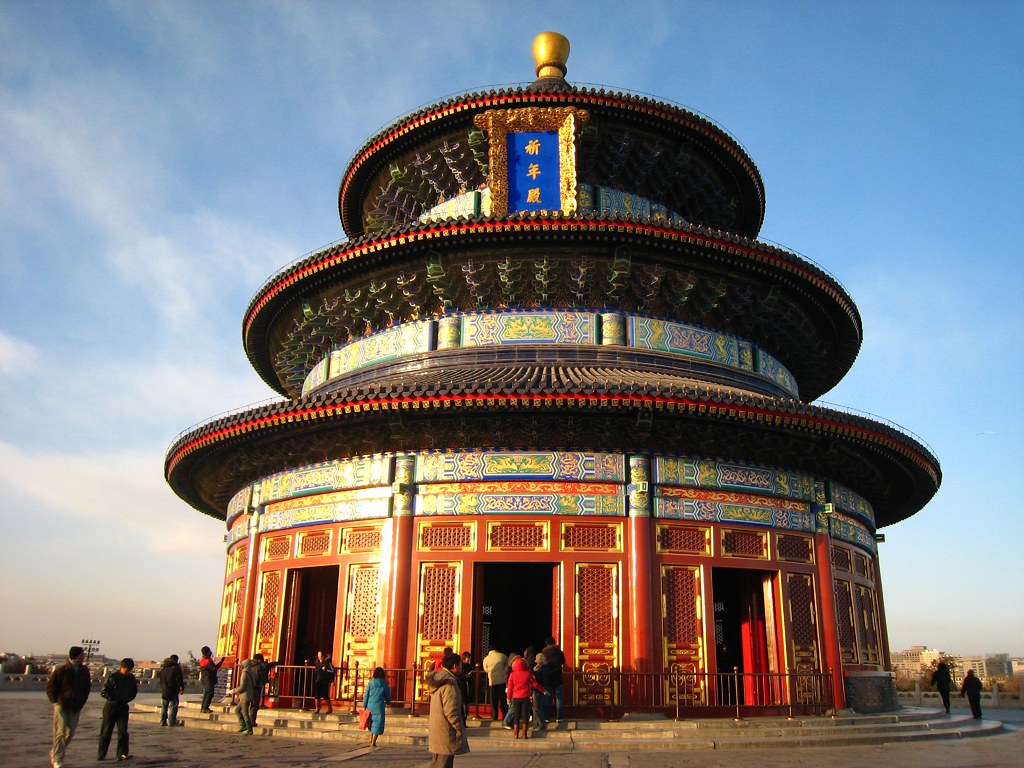
The Hall of Prayer for Good Harvests stands as the Temple of Heaven’s most iconic structure and arguably one of China’s most photographed buildings. This circular, three-tiered wooden building rises 38 meters high and spans 30 meters in diameter, achieving perfect proportional harmony without using a single nail in its construction.
The building’s symbolic elements reveal layers of meaning that reward careful observation. Twenty-eight massive pillars support the structure, representing the 28 constellations in Chinese astronomy. The four central pillars symbolize the four seasons, while the twelve pillars in the middle ring represent the months of the year. The outer ring’s twelve pillars represent the twelve traditional Chinese time periods within each day.
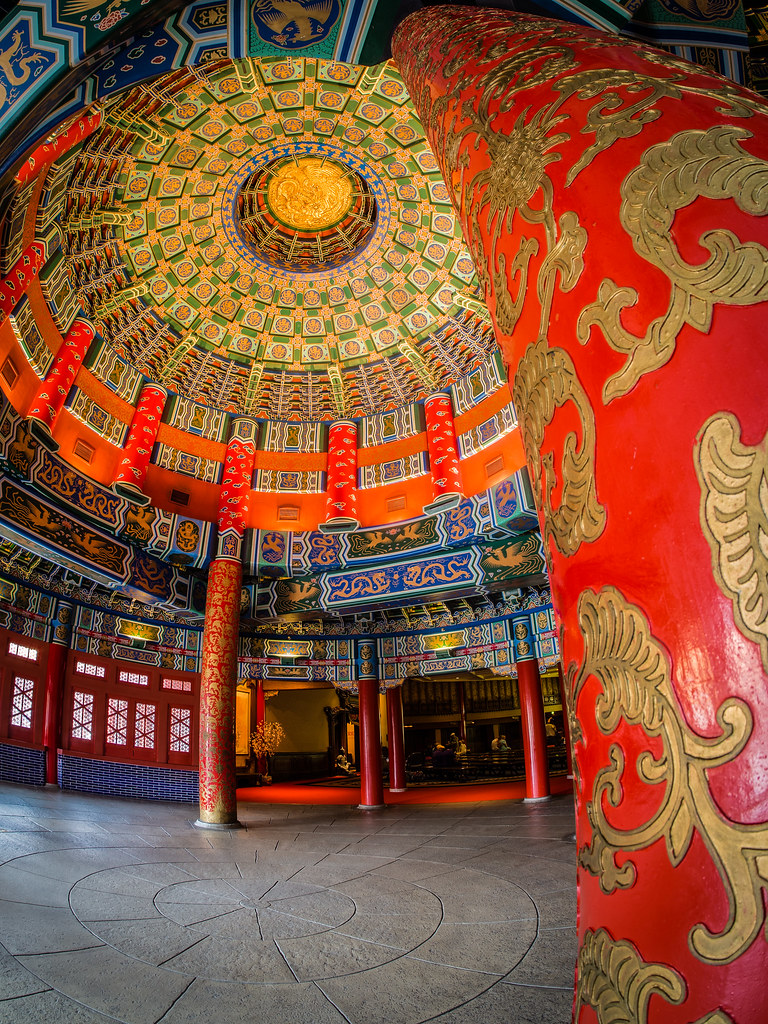
The roof’s brilliant blue tiles represent heaven, while the building’s circular shape follows the Chinese belief that heaven is round. Three tiers of eaves create visual rhythm and demonstrate sophisticated understanding of proportional relationships. The top tier houses a golden sphere representing the connection between earth and heaven, while intricate dragon carvings throughout the structure symbolize imperial power and divine blessing.
Visitors should examine the ceiling inside the hall, where elaborate painted patterns create a mesmerizing visual experience. The coffered ceiling demonstrates advanced woodworking techniques and artistic sophistication that took master craftsmen years to complete. The acoustic properties of the space amplify sound in fascinating ways, with conversations carrying clearly throughout the circular chamber.
Imperial Vault of Heaven (Huangqiongyu)
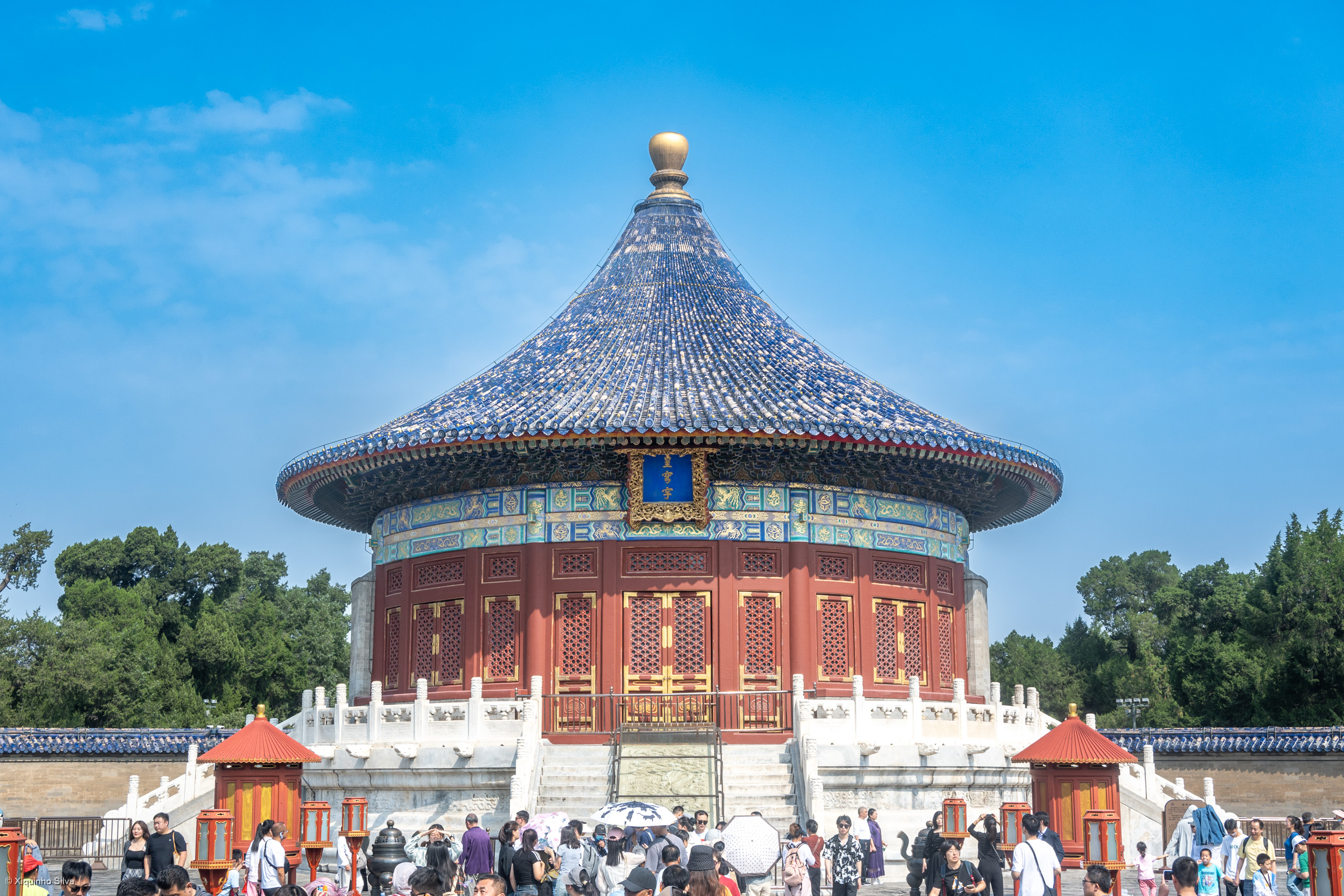
The Imperial Vault of Heaven served as storage for the ceremonial tablets used in heaven worship rituals. This smaller circular building shares architectural DNA with its larger counterpart while offering unique acoustic phenomena that continue to amaze visitors today.
The famous Echo Wall surrounding the Imperial Vault creates remarkable sound effects that demonstrate ancient Chinese understanding of acoustic principles. When two people stand at opposite ends of the circular wall and speak in normal voices, they can hear each other clearly despite being separated by nearly 65 meters of distance. This effect works best during quieter periods when ambient noise doesn’t interfere with the sound transmission.
The building itself features exquisite blue-tiled roofing and white marble foundations that create stunning visual contrast. The interior houses replica tablets and ceremonial objects that help visitors understand the complex rituals performed during imperial ceremonies. The craftsmanship throughout the building reveals attention to detail that exemplifies Chinese artistic traditions at their finest.
Three marble steps lead to the entrance, each carefully proportioned according to ancient architectural principles. The doorway faces north toward the Hall of Prayer for Good Harvests, maintaining the complex’s overall geometric harmony and ceremonial flow patterns that guided imperial processions.
Circular Mound Altar (Yuanqiutan)
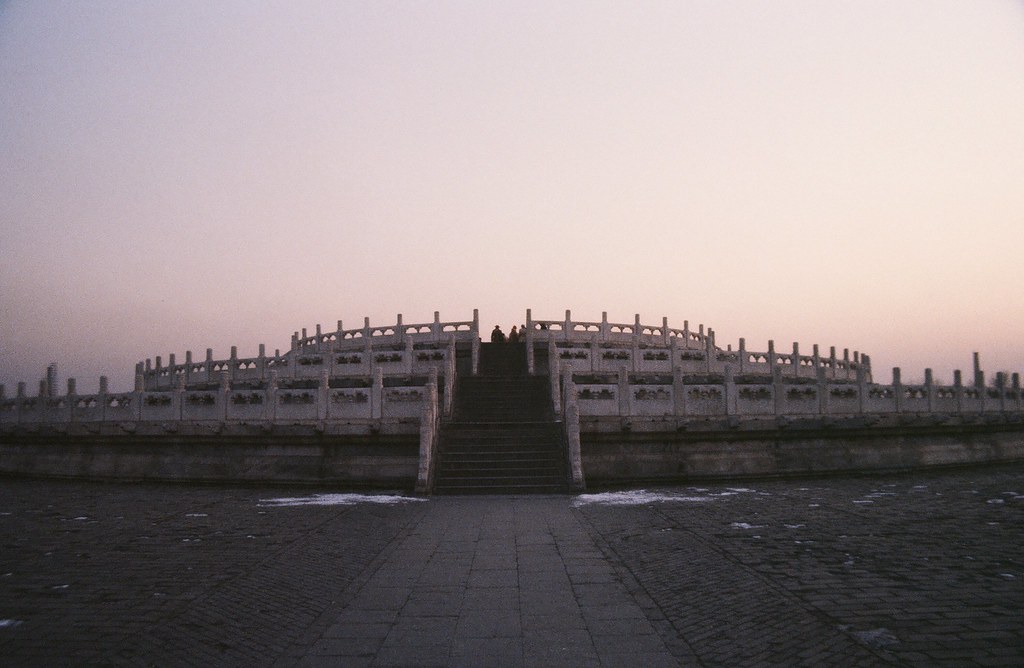
The Circular Mound Altar represents the Temple of Heaven’s most sacred space, where emperors performed the crucial winter solstice ceremonies that legitimized their rule. This three-tiered circular platform demonstrates mathematical precision and symbolic sophistication that reveals deep philosophical concepts embedded in stone.
The altar’s design follows the principle of yang numbers, with each tier containing multiples of nine stones arranged in concentric circles. The top tier contains 81 stones (nine times nine), the middle tier has 162 stones, and the bottom tier features 243 stones. This mathematical progression reflects Chinese numerological beliefs about cosmic harmony and divine order.
Standing at the center of the top tier creates a unique acoustic experience where your voice seems amplified and resonant, as if heaven itself is listening to your words. This effect results from the precise circular geometry that focuses sound waves back toward the center point. Ancient emperors believed this acoustic phenomenon confirmed heaven’s attention to their prayers and proclamations.
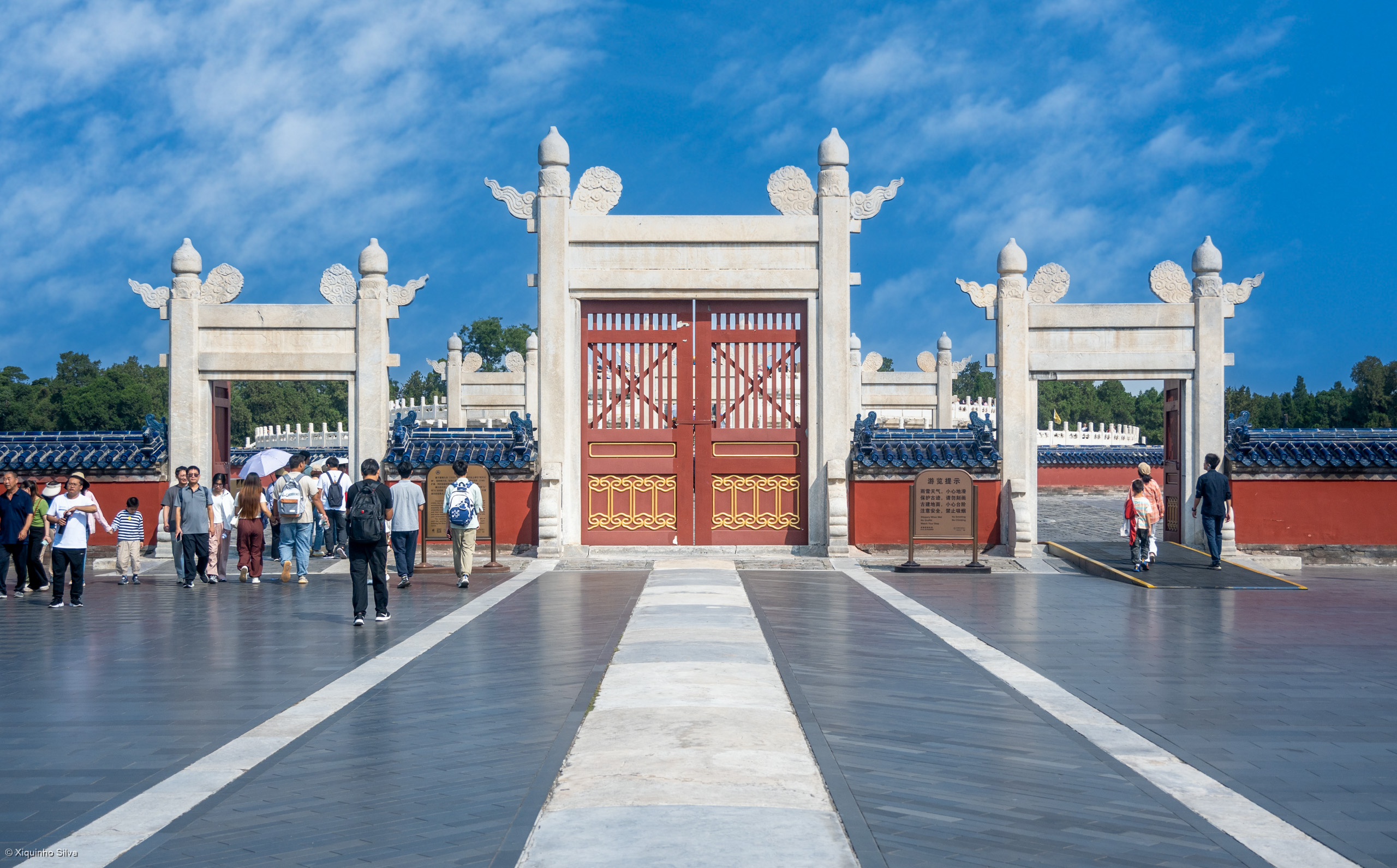
The altar’s three tiers symbolize different levels of existence: earth, humanity, and heaven. The emperor would climb these levels during ceremonies, symbolically ascending from earthly concerns to divine communion. The white marble construction creates brilliant reflections during sunny days while maintaining visual purity that reinforces the space’s sacred character.
Surrounding balusters feature intricate dragon and phoenix carvings that demonstrate masterful stone carving techniques. Each baluster is unique, offering visitors countless details to discover and appreciate. The craftsmanship represents thousands of hours of skilled labor by master artisans whose techniques have been passed down through generations.
Special Experiences You Shouldn’t Miss
Early Morning Tai Chi and Traditional Activities

Arriving at the Temple of Heaven during early morning hours reveals a completely different aspect of this historic site. Local residents transform the park into a living cultural center, practicing tai chi, dancing, singing traditional opera, and playing musical instruments in peaceful harmony with the ancient architecture.
This organic cultural display provides authentic insights into contemporary Chinese life while demonstrating the continuity between ancient traditions and modern practice. Watching elderly practitioners move through graceful tai chi forms against the backdrop of imperial architecture creates profound moments of cultural connection that no guidebook can adequately describe.
Photography opportunities during these early morning sessions are exceptional, with soft lighting and genuine cultural interactions creating compelling documentary images. The contrast between ancient stone and living tradition offers powerful visual narratives about cultural persistence and adaptation.
Many locals welcome respectful interaction and enjoy sharing their knowledge about traditional practices. These informal cultural exchanges often provide deeper insights into Chinese philosophy and lifestyle than formal presentations or museum displays.
Acoustic Phenomena Exploration
The Temple of Heaven’s acoustic properties offer unique interactive experiences that engage multiple senses simultaneously. Beyond the famous Echo Wall, several locations throughout the complex demonstrate sophisticated understanding of sound physics that ancient architects incorporated into their designs.
The Triple Echo Stones near the Imperial Vault of Heaven create fascinating sound multiplication effects. Standing on the first stone and clapping produces one echo, the second stone generates two echoes, and the third stone creates three distinct echoes. This phenomenon results from precisely calculated distances between the stones and surrounding walls that create specific sound reflection patterns.
The Dialogue Stone demonstrates how ancient Chinese architects created spaces for private communication within public settings. Two people standing at specific points can have quiet conversations that remain inaudible to others nearby, while sounds from other directions are naturally blocked or muffled by the architectural design.
These acoustic experiences require patience and experimentation to fully appreciate. Visit during quieter periods when ambient noise doesn’t interfere with the subtle sound effects. Bring someone to help test the various acoustic phenomena – many effects require two people positioned at specific locations to work properly.
Seasonal Photography Opportunities
Each season transforms the Temple of Heaven into a different photographic experience, offering varied lighting conditions, natural backdrops, and cultural activities that create unique visual opportunities throughout the year.
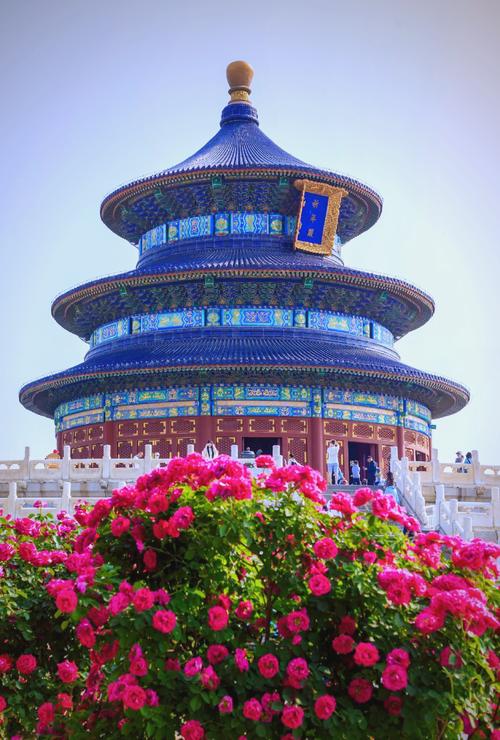
Spring brings blooming flowers and fresh green foliage that soften the architectural lines while adding natural color to complement the blue and white building palette. Cherry blossoms and other flowering trees create romantic frames for the historic structures, while mild weather encourages more outdoor activities among local residents.
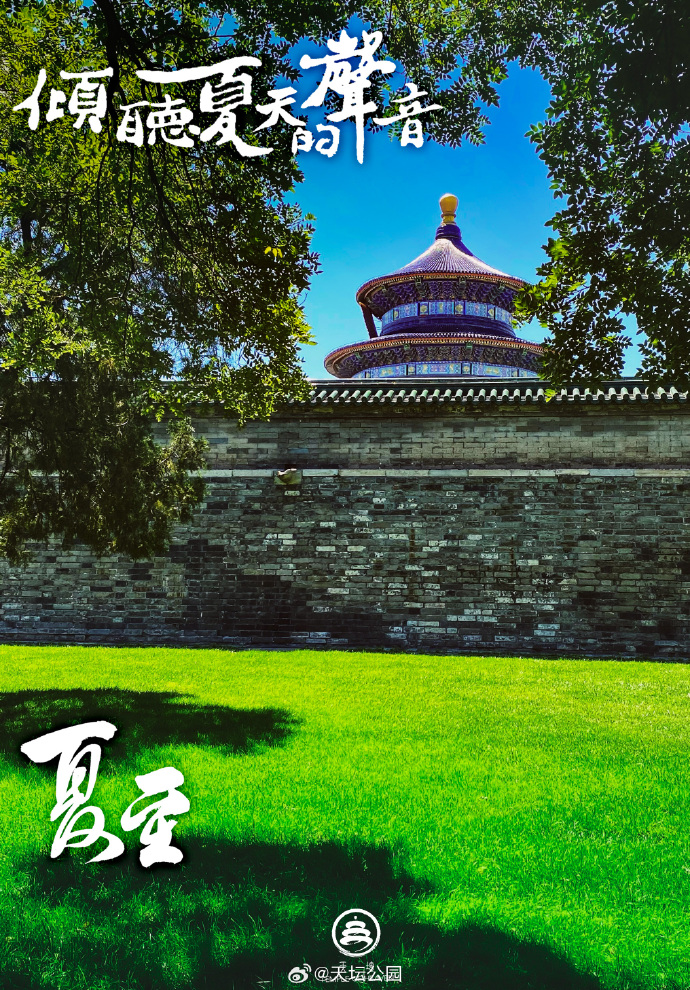
Summer provides the longest daylight hours and most dramatic lighting conditions, with early morning and late afternoon sun creating strong shadows and highlights that emphasize architectural details. However, summer also brings the largest crowds, requiring patience and strategic timing for optimal photography conditions.
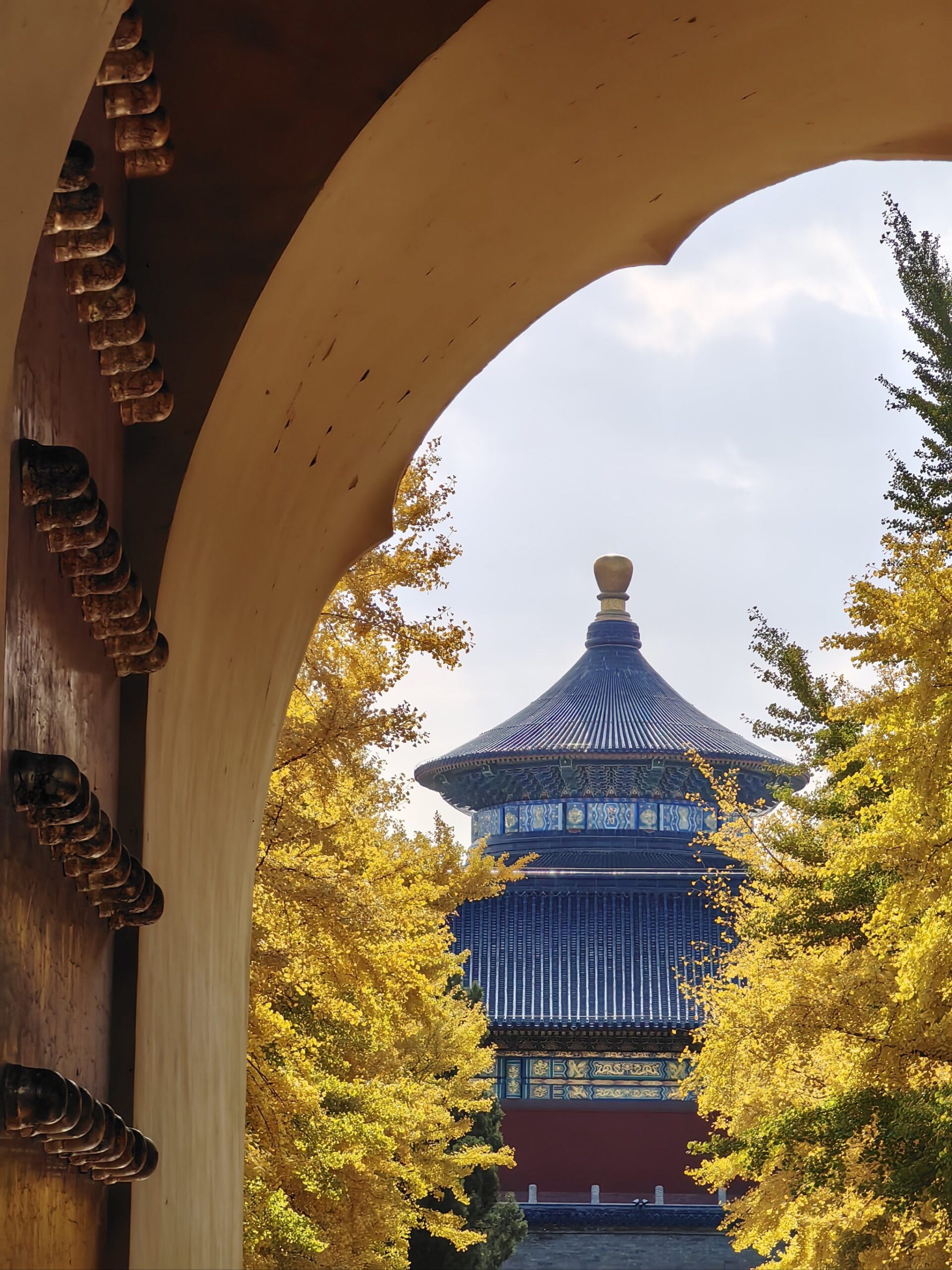
Autumn offers perhaps the most spectacular photographic opportunities, with golden and red foliage creating warm color contrasts against the cool blue tiles and white marble. The seasonal transformation adds layers of natural beauty while maintaining clear sight lines to architectural features.
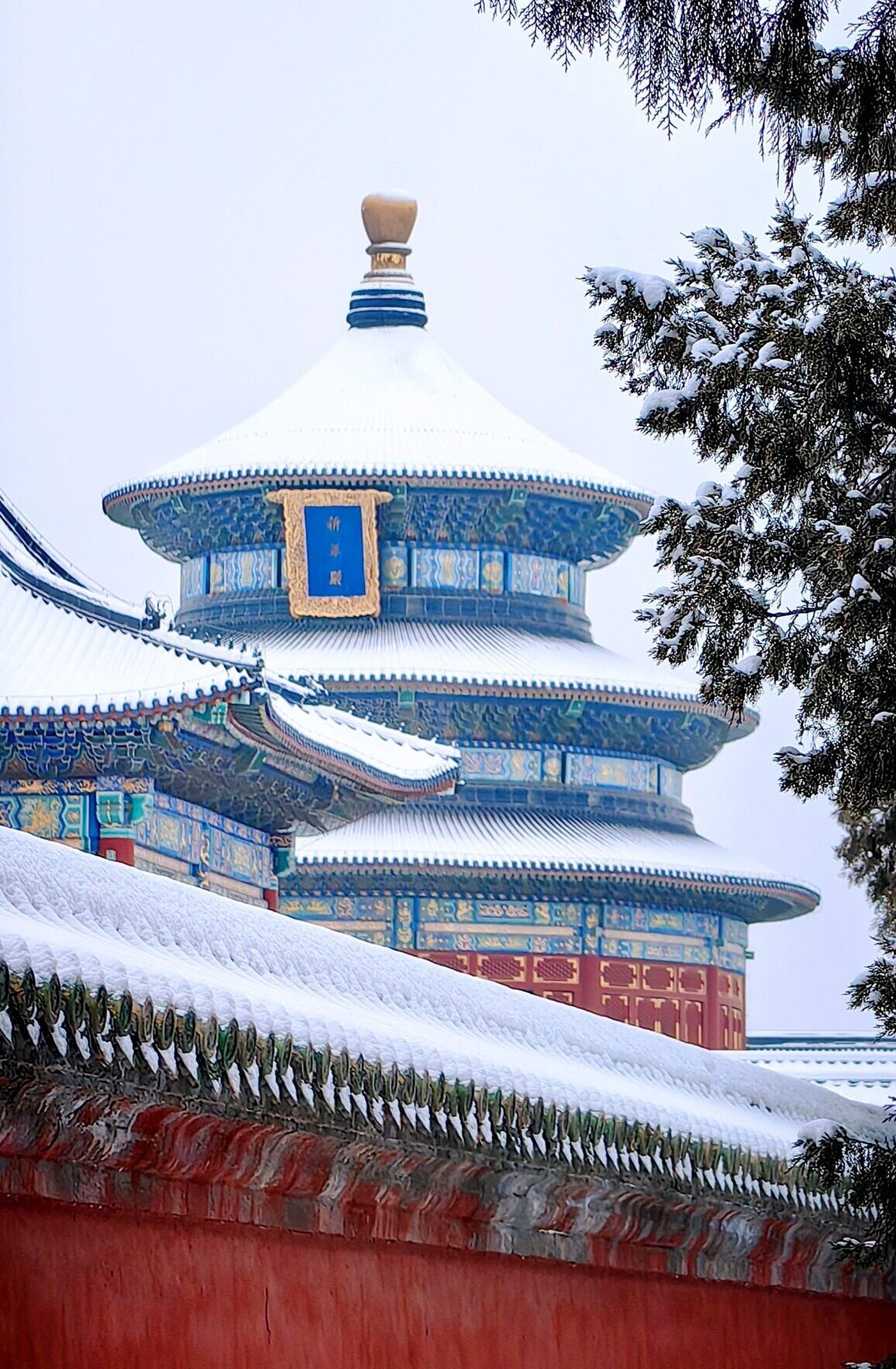
Winter photography presents unique challenges and rewards, with potential snow coverage creating dramatic monochromatic compositions while emphasizing the geometric purity of the architectural design. Fewer crowds during winter months allow for more contemplative photography and peaceful exploration of the complex.
Best Time to Visit Temple of Heaven
Timing your visit to the Temple of Heaven significantly impacts your overall experience, with different seasons and times of day offering distinct advantages for various types of travelers and interests.
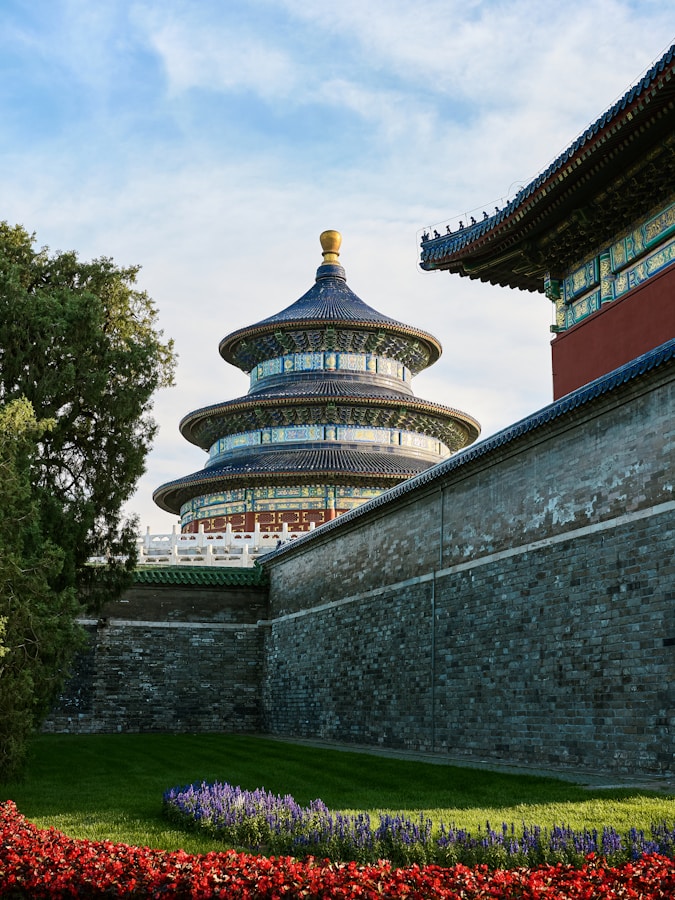
Seasonal Considerations
Spring (March to May) represents the optimal visiting season for most travelers, offering comfortable temperatures, blooming flowers, and moderate crowd levels. Weather during this period remains pleasant for extended walking, while natural beauty enhances the architectural splendor without overwhelming it. However, Chinese holidays during spring can bring larger crowds that affect photography and peaceful contemplation opportunities.
Summer (June to August) provides the longest daylight hours and warmest weather, ideal for early morning visits when temperatures remain comfortable and lighting conditions are optimal. Morning visits during summer months also avoid afternoon thunderstorms that can disrupt outdoor exploration. The peak tourist season means higher crowd levels throughout the day, requiring strategic planning to avoid the busiest periods.
Autumn (September to November) offers exceptional photographic opportunities with colorful foliage complementing the architectural elements while providing comfortable touring conditions. This season combines pleasant weather with spectacular natural beauty, though popularity among both international and domestic tourists can create crowded conditions during peak weekend periods.
Winter (December to February) provides the most peaceful visiting experience with minimal crowds and unique photographic opportunities if snow occurs. Cold temperatures require appropriate clothing but reward hardy visitors with serene exploration conditions and dramatic seasonal beauty. Shorter daylight hours limit visiting time but create special lighting effects during golden hour periods.
Daily Timing Strategies
Early morning visits (6:00-8:00 AM) offer the most authentic cultural experiences, with local residents practicing traditional activities throughout the park while tourist crowds remain minimal. Peak season opening hours run from 6:00-22:00 (last entry at 21:00), allowing ambitious travelers to experience the site in pristine conditions.
The acoustic phenomena work best during quieter periods when ambient noise doesn’t interfere with sound effects. Early morning timing provides optimal conditions for testing the Echo Wall and other acoustic features while avoiding the constant chatter that diminishes these experiences during busy periods.
Photography benefits significantly from early morning timing, with soft directional lighting creating ideal conditions for architectural photography while avoiding harsh midday shadows that can obscure important details. Golden hour lighting during sunrise creates particularly striking images of the blue-tiled roofs against warm sky colors.
Late afternoon visits (4:00-6:00 PM) provide another excellent timing option, especially during summer months when morning temperatures might be challenging for some visitors. Afternoon lighting creates different shadow patterns and color relationships that offer alternative photographic perspectives while still avoiding peak crowd periods.
Evening visits allow travelers to experience the site during less crowded periods while taking advantage of dramatic sunset lighting conditions. The extended summer hours make evening visits particularly attractive for photography enthusiasts seeking optimal lighting without morning wake-up requirements.
How to Visit Temple of Heaven
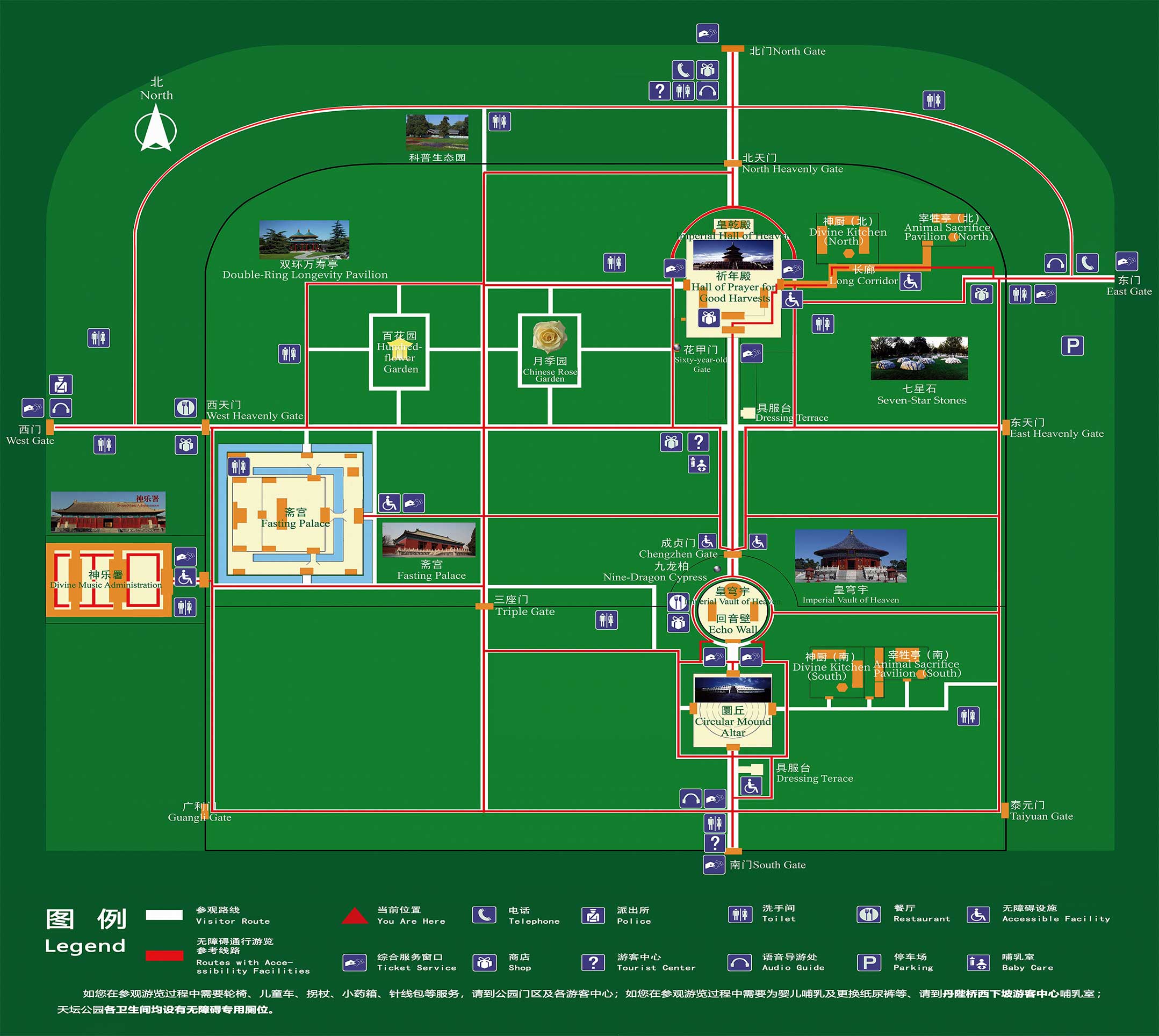
Recommended Visit Route
We recommend following the traditional imperial route from south to north, which provides the most logical progression through the complex and allows you to experience the ceremonial journey that emperors once took.
Standard 2-3 Hour Route:
- Enter through the South Gate (closest to subway)
- Start at the Circular Mound Altar – the most sacred site
- Walk north along the Sacred Way to the Imperial Vault of Heaven
- Test the Echo Wall acoustic phenomena
- Continue north to the Hall of Prayer for Good Harvests (main highlight)
- Explore the surrounding park areas
- Exit through East Gate (convenient for subway return)
Extended 4-5 Hour Route (for photography/cultural enthusiasts):
- Arrive early (6:00-7:00 AM) to observe morning tai chi activities
- Follow the standard route with extended time at each location
- Visit the Hall of Abstinence and other smaller buildings
- Explore the Rose Garden and other themed garden areas
- Return during golden hour for photography
What Order to See the Buildings
Most Efficient Approach: Begin with the Circular Mound Altar as it requires the most cultural explanation and sets the spiritual context. Move to the Imperial Vault of Heaven for the acoustic experiments when crowds are lighter. Finish with the Hall of Prayer for Good Harvests as the visual climax of your visit.
Photography Priority: Visit the Hall of Prayer for Good Harvests first during optimal lighting, then work backwards through the complex. This approach prioritizes the most photogenic structure during the best lighting conditions.
How Much Time to Allocate
- Quick visit: 90 minutes (main highlights only)
- Standard visit: 2-3 hours (all major sites plus some cultural observation)
- Comprehensive visit: 4-5 hours (includes morning activities, detailed photography, and extended exploration)
- Photography focused: Half or full day depending on lighting preferences and seasonal conditions
Planning Your Visit: Getting There, Opening Hours, and Tickets
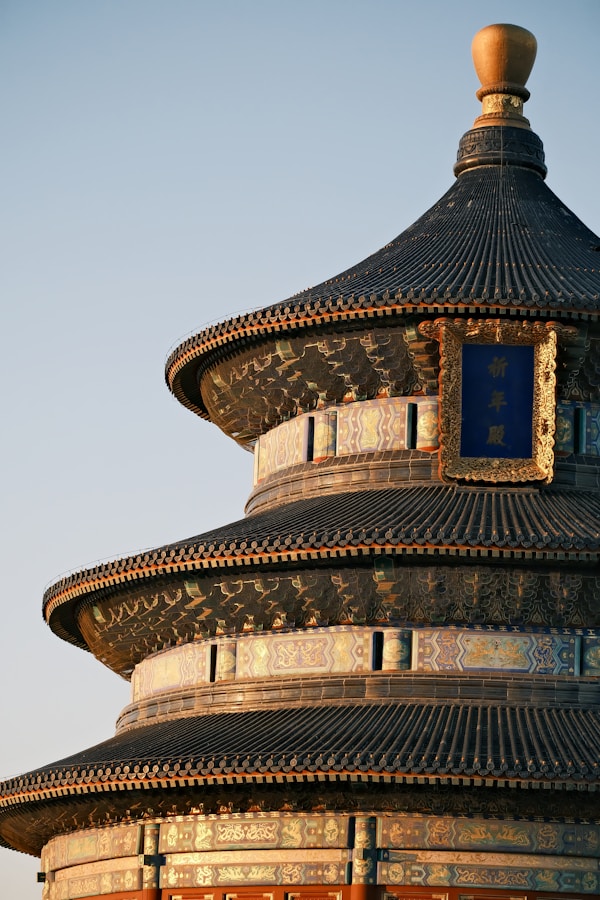
Transportation Options
The Temple of Heaven’s central Beijing location provides excellent accessibility through multiple transportation methods, making it easily reachable from anywhere in the city. The most convenient option involves taking Beijing’s efficient subway system, which connects directly to the site through several nearby stations.
Tiantan Dongmen Station (Temple of Heaven East Gate Station) on Line 5 provides the closest subway access, requiring only a short walk to reach the main entrance. This station serves as the primary access point for most visitors and connects directly to other major Beijing attractions through the extensive subway network.
Qianmen Station on Lines 2 and 8 offers an alternative subway option with slightly longer walking distance but potentially better connections from certain areas of Beijing. The walk from Qianmen Station takes approximately 15 minutes through interesting hutong neighborhoods that provide additional cultural experiences.
Bus transportation provides another viable option with multiple routes serving the Temple of Heaven area. Routes 6, 14, 15, 17, 20, 35, 36, 39, 41, 43, 60, 116, 128, 525, 610, 684, 685, 687, 723, 814 all stop near the complex entrances, though subway transportation generally offers more predictable timing and easier navigation for international visitors.
Taxi services provide door-to-door convenience, particularly valuable for travelers carrying photography equipment or those with mobility limitations. However, traffic congestion during peak hours can significantly extend travel times and costs compared to subway alternatives.
Opening Hours and Admission
Peak season hours (April 1 to October 31) run from 6:00-22:00 with last entry at 21:00, providing extensive visiting opportunities that accommodate various schedule preferences and lighting conditions for photography.
Off-season hours (November 1 to March 31) operate from 6:30-22:00 with last entry at 21:00, offering generous visiting windows during months with shorter daylight periods.
The park gates open earlier than the individual building interiors, allowing visitors to enjoy the grounds and observe local morning activities before formal touring begins. This timing strategy works particularly well for photography enthusiasts seeking optimal lighting conditions and cultural authenticity.
Individual buildings within the complex maintain their own specific opening hours, typically running from 8:00 AM to 5:00 PM during peak season and 8:00 AM to 4:30 PM during off-season. These interior spaces close earlier than the park grounds, requiring strategic timing for visitors interested in exploring building interiors.
Ticket Information and Pricing
Through Ticket: The ticket charges RMB 34 (April – November) and RMB 28 (December – March). With a through ticket, you can enter the park and go to visit the three paid historic sights in the park – Hall of Prayer for Good Harvests, The Imperial Vault of Heaven and the Circular Mound Altar.
Children under 18 receive free admission, making this an excellent family-friendly destination. Park-only tickets provide access to the grounds and exterior views of all buildings at lower cost for budget-conscious travelers.

Practical Travel Tips for Your Temple of Heaven Visit
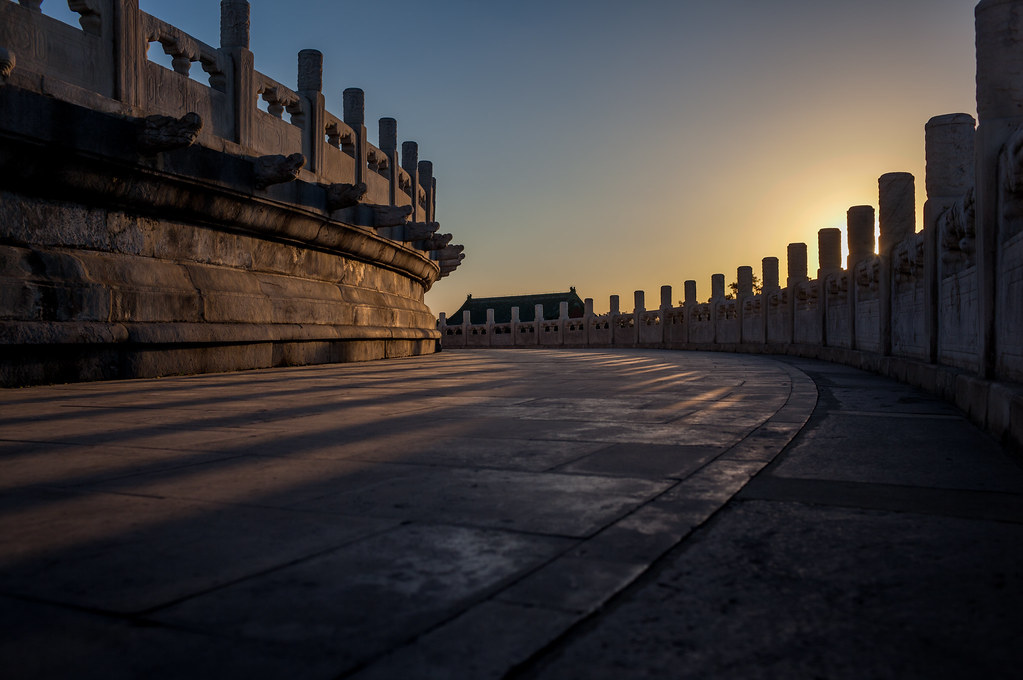
What to Bring and Wear
Comfortable walking shoes rank as the most important preparation for Temple of Heaven visits, as the complex spans extensive grounds with various surface types including marble, stone, and traditional paving. The site involves significant walking distances between major attractions, with uneven surfaces and stairs requiring sturdy footwear for safe navigation.
Weather-appropriate clothing becomes crucial given the outdoor nature of most Temple of Heaven experiences. Beijing’s continental climate creates significant seasonal variation, with summer temperatures reaching above 35°C (95°F) and winter temperatures dropping below -10°C (14°F). Layered clothing options provide flexibility for changing conditions throughout extended visits.
Sun protection items including hats, sunglasses, and sunscreen are essential during warmer months, as much of the complex offers limited shade coverage. The large open spaces and reflective marble surfaces can intensify sun exposure, making protection particularly important for extended photography sessions or detailed exploration.
Photography equipment requires careful consideration given the Temple of Heaven’s exceptional visual opportunities. Wide-angle lenses capture the architectural scale and geometric relationships, while telephoto lenses isolate specific details and compress perspective relationships between foreground and background elements.
Water and snacks become important for extended visits, though the park does contain some refreshment facilities near major entrances. The extensive walking and outdoor exposure can create fatigue and dehydration, particularly during summer months or for visitors unaccustomed to significant walking distances.
Cash remains necessary for ticket purchases and some refreshment purchases, as not all vendors accept electronic payment methods. Small denomination bills facilitate transactions and tip payments for optional services like guided tours or photography assistance.
Cultural Etiquette and Respectful Visiting
The Temple of Heaven’s religious and historical significance requires respectful behavior that honors both the site’s sacred heritage and contemporary Chinese cultural values. Understanding appropriate conduct enhances your experience while demonstrating cultural sensitivity that locals appreciate.
Photography restrictions apply in certain areas, particularly building interiors where flash photography might damage historic materials or disrupt other visitors’ experiences. Always check for posted signs and ask permission before photographing people, especially elderly residents engaged in traditional activities.
Noise levels should remain moderate out of respect for other visitors and the site’s contemplative atmosphere. The acoustic properties that make certain areas fascinating for sound exploration also mean that loud conversations or disruptive behavior can negatively impact many people’s experiences simultaneously.
Traditional morning activities practiced by local residents deserve respectful observation without disruption. While many practitioners welcome gentle interaction, avoid interrupting ongoing exercises or performances. These activities represent genuine cultural traditions rather than tourist entertainment.
Dress codes, while not strictly enforced, should reflect the site’s cultural importance. Avoid revealing clothing or items with potentially offensive graphics or text. Conservative dress demonstrates respect for Chinese cultural values while ensuring comfort during extended outdoor exploration.
Queue etiquette follows Chinese social norms, which may differ from Western expectations. Observe local behavior patterns and follow established waiting patterns, particularly around popular photo locations or during busy periods when crowds require organized movement.
Photography Guidelines and Best Practices
The Temple of Heaven offers exceptional photography opportunities that reward technical preparation and creative vision. Understanding optimal shooting conditions and location-specific techniques helps capture images that effectively communicate the site’s architectural beauty and cultural significance.
Golden hour lighting creates the most dramatic architectural photography conditions, with warm directional light emphasizing texture and dimensional relationships while avoiding harsh shadows that can obscure important details. Plan arrival times to coincide with sunrise or sunset periods for optimal natural lighting.
Compositional strategies should emphasize the geometric relationships that define Temple of Heaven architecture. Use leading lines created by marble patterns, balustrades, and walkways to guide viewer attention toward focal points while maintaining visual balance between architectural elements and natural surroundings.
Wide-angle perspectives capture the scale and proportional relationships between buildings, though careful attention to distortion correction ensures accurate representation of the architectural harmony that defines the complex design philosophy.
Detail photography reveals intricate craftsmanship and symbolic elements that reward close examination. Dragon carvings, painted ceiling patterns, and stone carving techniques provide compelling subjects that illustrate the artistic sophistication underlying the architectural achievement.
Crowd management strategies become essential during busy periods, requiring patience and alternative viewpoints that avoid including excessive numbers of other visitors in images intended to showcase architectural and natural beauty.
Weather considerations significantly impact photography opportunities, with overcast conditions providing even lighting for detail work while sunny conditions create dramatic contrast and shadow patterns that emphasize architectural volume and spatial relationships.
Real Traveler Reviews and Experiences
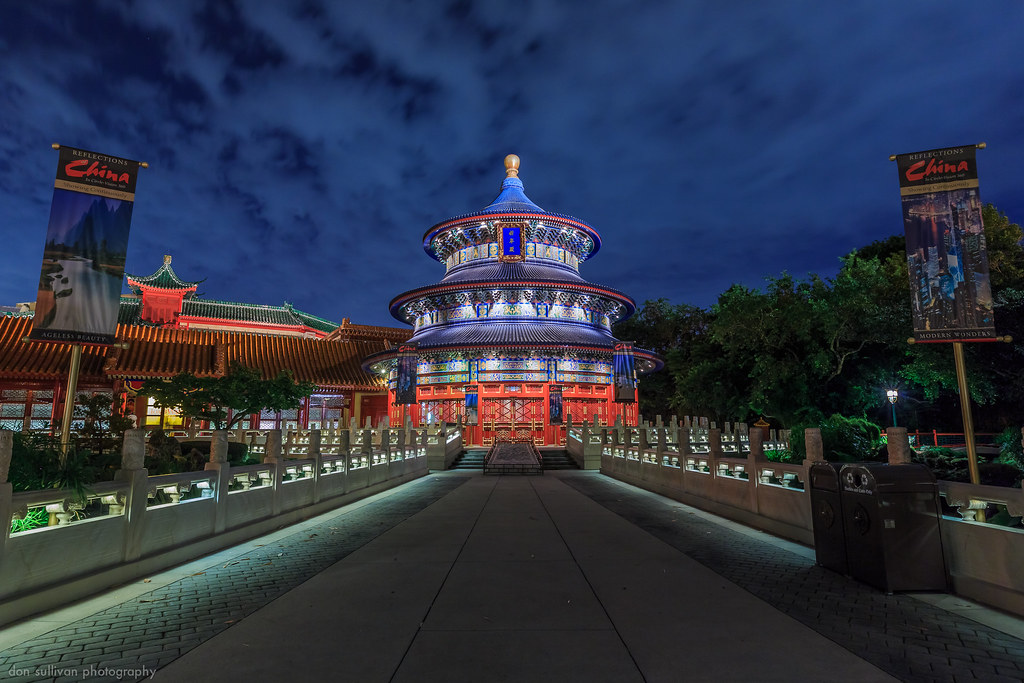
We’ve gathered authentic reviews from travelers who have visited the Temple of Heaven to provide you with genuine insights about what to expect during your visit.
Architecture and Photography Enthusiasts
“Among Beijing’s many tourist attractions, this one stands out above all others. Tiantian Park is very large and in the center there is the Temple of Heaven (or Paradise) with its blue dome. Beautiful during the day and beautiful even at night in the dark thanks to the right lighting.” – TripAdvisor Review, March 2024 (Source)
“The Temple of Heaven in Beijing, China is a spectacular UNESCO World Heritage site. Its tall, circular building in cobalt blue, bright red and gold, is magnificent, even in the rain!” – Charamana Consulting Travel Blog, December 2024 (Source)
Cultural Experience Feedback
“A place with beautiful parks and buildings with exuberant architecture that were used by the emperors of the Ming and Quing dynasties.” – TripAdvisor Review, 2025 (Source)
“The Temple of Heaven had the best English signage. Keep your passport with you as many [sites require it]” – TripAdvisor Traveler FAQ (Source)
What Our Analysis Shows
Based on over 12,000 TripAdvisor reviews and our experience guiding travelers, several patterns emerge:
Photography enthusiasts consistently praise the diverse shooting opportunities and dramatic lighting effects, particularly during golden hour and evening illumination. Many wish they had allocated more time for detailed architectural photography.
Cultural immersion seekers find the early morning local activities particularly rewarding. The opportunity to observe and occasionally participate in traditional practices like tai chi creates lasting memories that differentiate the Temple of Heaven from more formal museum experiences.
Family travelers appreciate the free admission for children under 18 and the open spaces that allow children to move around safely. However, the cultural significance requires adult explanation to maintain children’s interest throughout extended visits.
International visitors frequently comment on the peaceful atmosphere compared to other major Beijing attractions, appreciating the opportunity for contemplative exploration without constant crowding. The excellent English signage receives particular praise from non-Chinese speakers.
Architecture students and professionals consistently rank the Temple of Heaven among Beijing’s most educational sites, appreciating the opportunity to examine traditional Chinese construction techniques and design principles up close. The acoustic phenomena generate particular fascination among visitors with technical backgrounds.
Frequently Asked Questions
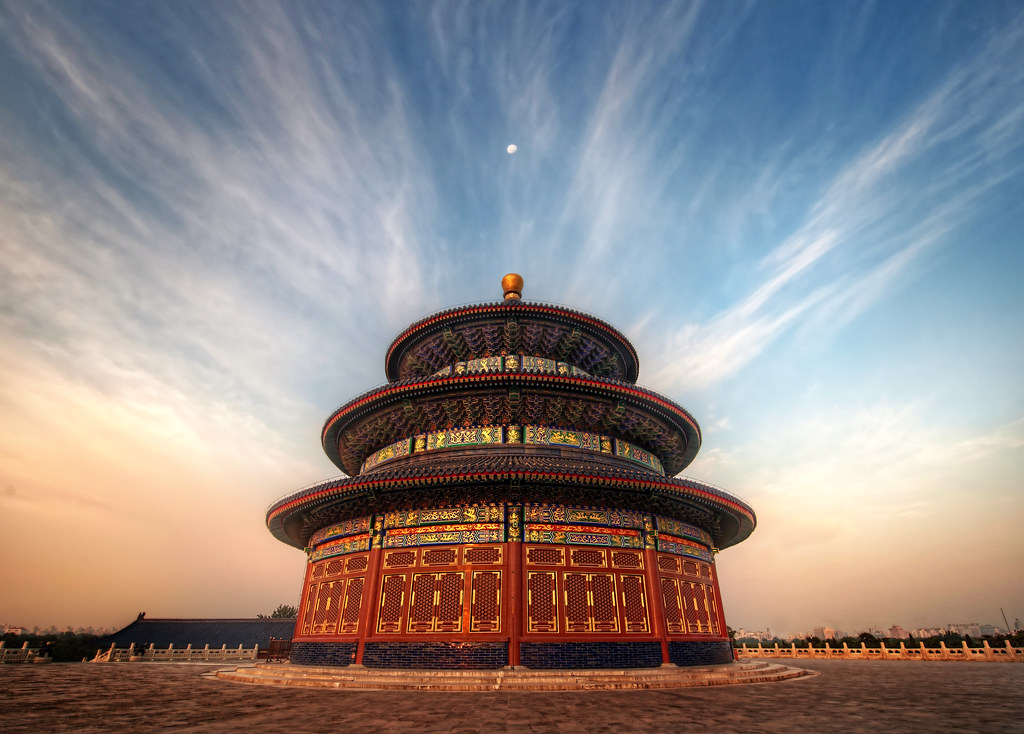
How long should I plan for a Temple of Heaven visit?
Most visitors need 2-3 hours for comprehensive exploration including all major buildings and some time observing morning activities. Photography enthusiasts should allow 4-5 hours to capture optimal lighting conditions and detailed architectural elements. Rush visits can cover the highlights in 90 minutes, though this compressed timing limits cultural immersion opportunities.
Can I visit the Temple of Heaven with small children?
Yes, the Temple of Heaven welcomes families and provides free admission for children under 18. The open spaces offer room for children to move around, while the acoustic phenomena create interactive experiences that engage younger visitors. However, the cultural significance and architectural details require adult explanation to maintain children’s interest throughout extended visits.
What’s the best entrance to use?
The East Gate (Dongmen) provides the most convenient access from Tiantan Dongmen subway station and offers the most logical route through the complex following the traditional ceremonial progression from south to north. This entrance also provides better access to morning activity areas where local residents practice traditional exercises.
Are guided tours available and worth the cost?
Professional guided tours provide valuable historical context and cultural insights that significantly enhance the experience for visitors interested in understanding the deeper significance beyond architectural appreciation. However, the site’s layout and English signage support independent exploration for budget-conscious travelers comfortable with self-guided touring.
Can I use my camera everywhere in the complex?
Photography is permitted in most outdoor areas and some building interiors, though flash photography restrictions apply in certain locations to protect historic materials and other visitors’ experiences. Always check for posted signs and ask permission before photographing people, especially local residents engaged in traditional activities.
What should I do if it rains during my visit?
The covered walkways and building overhangs provide some weather protection, though much of the Temple of Heaven experience involves outdoor exploration that can be limited during heavy rain. Light rain often creates dramatic photographic opportunities with enhanced colors and interesting reflections, while indoor areas offer alternatives during severe weather.
Are there restaurants or cafes inside the complex?
Limited refreshment options exist near the main entrances, though most visitors find the selection basic and somewhat overpriced. Bringing water and snacks proves more economical and ensures availability during extended visits, particularly for photography sessions that might extend beyond normal meal times.
How does the Temple of Heaven compare to other Beijing attractions?
The Temple of Heaven offers a more peaceful and contemplative experience compared to the Forbidden City or Great Wall, with fewer crowds and more opportunities for cultural immersion through observation of local activities. The architecture represents different design principles and historical periods, providing complementary rather than redundant experiences for comprehensive Beijing exploration.
Is the site accessible for visitors with mobility limitations?
The complex includes some wheelchair-accessible paths and ramps, though the historic nature of the architecture means that certain areas involve stairs and uneven surfaces that may challenge visitors with mobility restrictions. The park grounds offer extensive accessible areas even if some building interiors remain difficult to access.
What’s the significance of the blue tiles on the roofs?
The brilliant blue glazed tiles represent heaven in Chinese cosmology and symbolize the connection between earthly imperial power and divine authority. This color choice wasn’t merely decorative – it communicated the site’s sacred function and the emperor’s role as intermediary between heaven and earth through visual symbolism that reinforced political and religious messages.
A Personal Note from Our Team
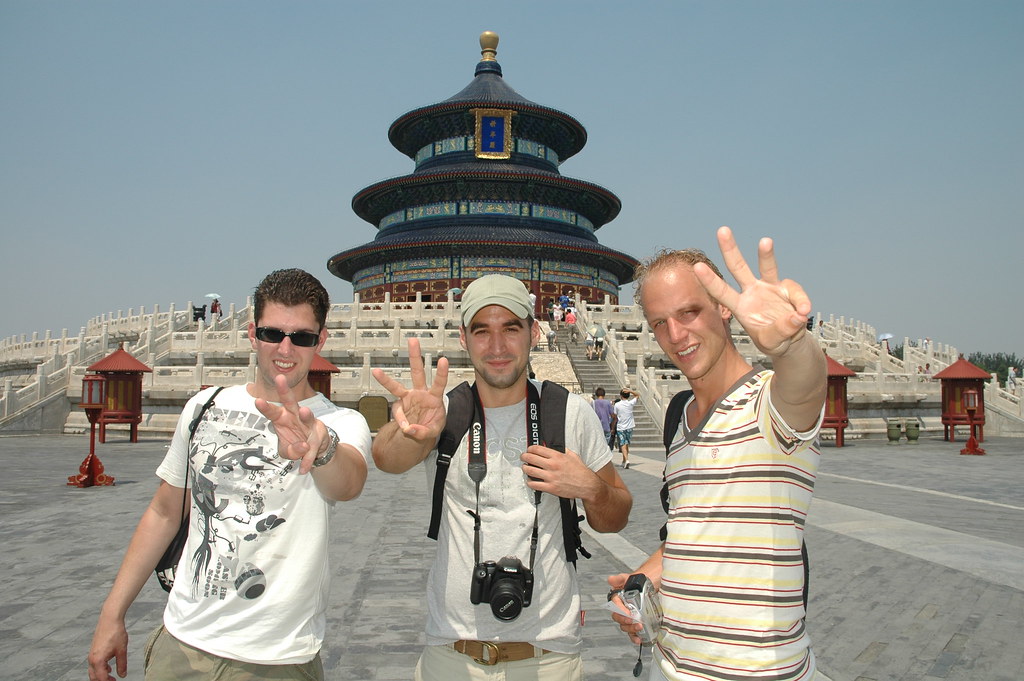
After years of guiding travelers through Beijing’s most celebrated attractions, the Temple of Heaven continues to surprise us with new details, seasonal changes, and cultural moments that reveal different aspects of this remarkable complex. What makes this site truly special isn’t just the architectural achievement – though that certainly impresses – but the way it continues to function as a living cultural space where ancient traditions merge seamlessly with contemporary Chinese life.
Every morning, we watch elderly residents transform the historic grounds into a community center where tai chi, traditional music, dancing, and other cultural practices create an authentic cultural experience that no museum can replicate. These organic interactions between historic architecture and living tradition provide insights into Chinese culture that extend far beyond guidebook descriptions or formal presentations.
The Temple of Heaven represents more than a tourist destination – it’s a window into the philosophical and spiritual foundations that continue to influence Chinese society today. The concepts of harmony, balance, and the relationship between heaven and earth that shaped this complex remain relevant to understanding contemporary Chinese values and worldview.
As your guides through China’s cultural treasures, we encourage you to approach the Temple of Heaven with patience and openness to experiences that might differ from your expectations. The most rewarding moments often come from quiet observation, respectful interaction with local residents, and willingness to engage with cultural concepts that might initially seem unfamiliar.
The acoustic phenomena, geometric symbolism, and architectural precision demonstrate the sophisticated understanding of mathematics, physics, and engineering that characterized Chinese civilization at its height. These technical achievements support deeper philosophical concepts about humanity’s place in the cosmic order that reward contemplation and study.
We’ve watched thousands of visitors discover personal connections to this remarkable place, whether through photography, cultural exchange, architectural appreciation, or spiritual reflection. The Temple of Heaven offers multiple entry points for engagement, ensuring that travelers with diverse interests and backgrounds can find meaningful experiences within this extraordinary complex.
Our team remains committed to helping you understand not just what you’re seeing, but why it matters – both historically and in contemporary Chinese culture. The Temple of Heaven provides an ideal introduction to Chinese architectural principles, religious concepts, and cultural values that enhance understanding of modern China while honoring the remarkable achievements of past civilizations.


